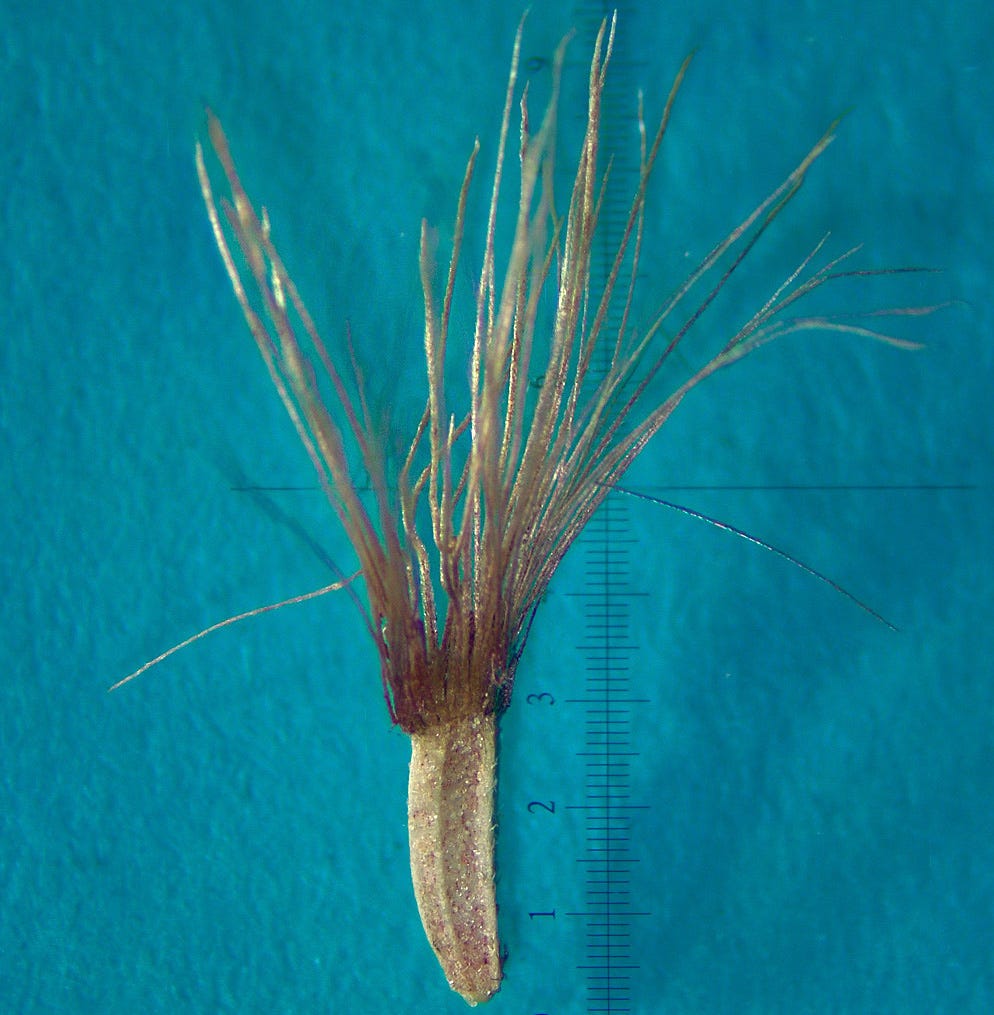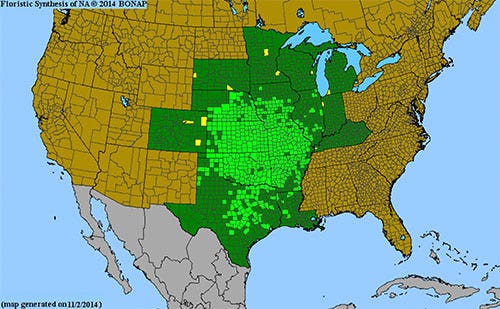Let 'em Ripen
Note to myself, in case I forget. When Baldwin's Ironweed seed heads turn brown, just WAIT...
When the first people walked on the tall grass prairie of North America, they found Baldwin's Ironweed. It can grow almost anywhere the sun shines, including on dry, rocky soil. It’s important for feeding butterflies, moths and especially native bees.
The blooming top looks like a natural bouquet of about a dozen flowers plus some buds that haven’t opened yet. Each one of what looks like individual flowers is actually a smaller bouquet, made up of 20-or-so tiny florets. (Floret = little flower.)
When the flowers get past it, each floret turns brown and forms a seed, topped by a little tuft of hairs or fibers, which is called the pappus. You get many seeds from each flower head. And if you want to collect seeds, it’s tempting to snatch them up as soon as the flowers turn brown.
When the plant looked like the photo above, I pinched some of those pappus fibers and tugged. They came out, but I had to pull hard. I could see the little seeds at the base of the pappus, but somehow it didn’t feel quite right. Maybe I’d made a mistake.
The brown seed heads that remained on the plant stayed looking the same for a month or two. Meanwhile, the leaves on the plant slowly turned black and curled up as if burned.
A few days ago, I noticed that the seed heads had changed. They looked like little shaving brushes. The pappus of each seed head was spread out, like an open flower. Tiny individual seeds with their pappus attached were separating from their seed heads, dangling loose or floating away on the breeze.
Then I got it. Nature was showing me that this was the time to collect seeds. The pappus fibers felt soft. I pinched a seed head, and it came away easy-peasy from the plant.
Looking at a seed head, I could make out a tiny seed at the base of each tuft of hairs. Below is one of the individual seeds. The numbered marks on the scale are millimeters. The tip of my little finger would cover a seed of the Baldwin's Ironweed and its pappus too. (I took this photo with a microscope.)
My guess is that seeds that stay on the plant until they start to disperse naturally are more likely to germinate than ones collected earlier by an over enthusiastic gardener.
Fortunately, I took only a few seeds the first time, so there were plenty left to make another collection. My, how easy it was! As if the ironweed was giving the seeds to me.
I thought of the wisdom of Robin Wall Kimmerer in her wonderful book, Braiding Sweetgrass. When one takes from nature, she advises, take only what is given. (Read the book.) The advice is both ethical and practical. When the seeds are ready, the plant gives them to you.
Maybe those early seeds I collected while the seed heads were still tight will be OK. I’m going to try an experiment next spring. I’ll plant an equal number seeds from each of my two batches of Baldwin’s Ironweed seeds. I’ll keep them separate and note what percentage of the seeds germinates from each group. Just for curiosity’s sake.
My guess is that I’ll get a higher germination rate from the ones I collected when the seed heads were loose and ripe, when the seeds came to me like a gift.
And next year, I’ll wait for them.
Scientific name: Vernonia baldwinii
Common names: Baldwin’s Ironweed, Western Ironweed
Plant family: It is in the Aster family (Asteraceae), as are sunflowers and asters.
Range: It is native to the very center of North America, especially in Nebraska, Kansas, Oklahoma, Texas, Arkansas, Missouri, and Iowa.










Thanks for your detailed post and photos. I've been debating about harvesting seeds from a different ironweed species, and your post definitely encouraged me to wait a while longer.
Did you get the expected results from your germination experiment?
10/9/23 Here is my report on the seed germination. I counted out 24 seeds of each group and kept them separate. I gave them the same damp-cold stratification and the same conditions. To my immense surprise, the ones I picked early almost all germinated. Only 4 of the ones that I picked later germinated. So my theory seems not to have been correct. This fall I picked them (a few days ago) when they were formed but not flying away.